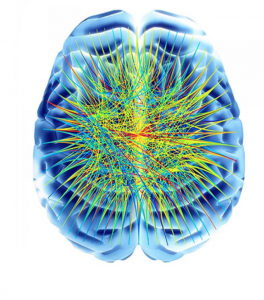 Autism spectrum disorders (ASD) are one of the most prevalent disorders in the world, as 1 in 68 children have been diagnosed. As the number of cases increase, the scientific community has brought forth many theories to explain the cause of ASD. The broadness of the spectrum and the complexity of the brain allow for a variety models to be carefully researched.
Autism spectrum disorders (ASD) are one of the most prevalent disorders in the world, as 1 in 68 children have been diagnosed. As the number of cases increase, the scientific community has brought forth many theories to explain the cause of ASD. The broadness of the spectrum and the complexity of the brain allow for a variety models to be carefully researched.
Neuron Connections
Neural connectivity is the theory at the forefront of explaining the development of ASD. Autistic patients have an increased number of neurons. This means the useful neuron connections cannot be as well developed because the unnecessary neurons have not been removed. The overgrowth of neurons creates a brain with a large amount of short distance interactions that disrupt the long distance interactions. This creates issues with lateralization, how the two hemispheres of the brain communicate with each other, which can be seen in language impediments in autistic individuals.
Overgrowth of neurons also increases the density of minicolumns and macrocolumns. These columns play a key role in receptive fields in the brain. They are important for the brain’s ability to perceive something, integrate the important information, and then produce a behavioral response. The increased density of these columns creates a “noisy” circuit in the brain, thus decreasing the brain’s ability to adequately process the information and create a response.
Broken Mirror Theory
Mirror neurons in the brain are involved in the processes of learning through imitation and help develop other neurons. Humans learn through the observation of others. When someone’s actions and emotions are observed by another, neurons are activated in the observer when they recognize and understand the action, intention, and emotion of the person being observed. This activation creates neuron networks to help people understand mental states. Children with ASD have a delay in their development of mirror neurons, so they have difficulty with emotion recognition and social understanding.
Genetic Disorder
While there is not a single “autism gene”, researching various genes with related functions can aid in the search for the cause of autism. Scientists are looking at these related genes which are also associated with single gene disorders. When these genes are mutated or altered, their expression can cause autistic symptoms. These genes are grouped into three types:
- Synaptic transmission supporting system
Mutations in these genes change how neurons connect to each other, thus altering how signals are transmitted. This leads to slower mental development, a common symptom of autism or Asperger syndrome.
- Abnormal cellular/synaptic growth rate
These genes are in charge of regulating the growth of neurons during development. A mutation in these genes would cause the overgrowth of neurons, resulting in the symptoms from the abundance of neuron connections mentioned previously.
- Gene transcription and translation
If the genes that control transcription and translation are altered, the ability to control protein synthesis can be lost. This can lead to problems in multiple different development mechanisms, which may eventually lead to autism since there is no regulation of what genes are being translated.
This was only a brief explanation of three of the models being researched to find the cause of autism. There are still many more theories out in various pieces of scientific literature. While all of these theories are different, it is a general consensus that not one theory works alone as the source of this disorder. Autism is complex and many theories work together to try to explain its pathology.
https://moodle.cord.edu/pluginfile.php/723245/mod_resource/content/0/pathophys%20of%20ASD%202017.pdf